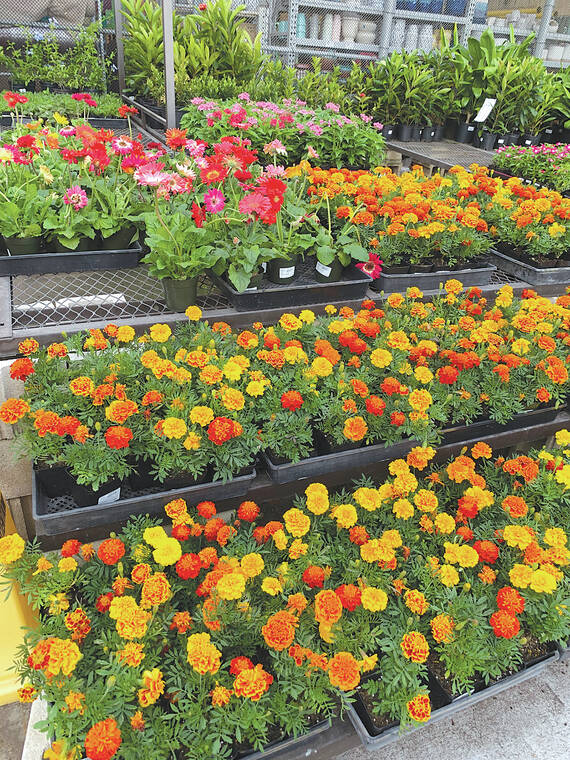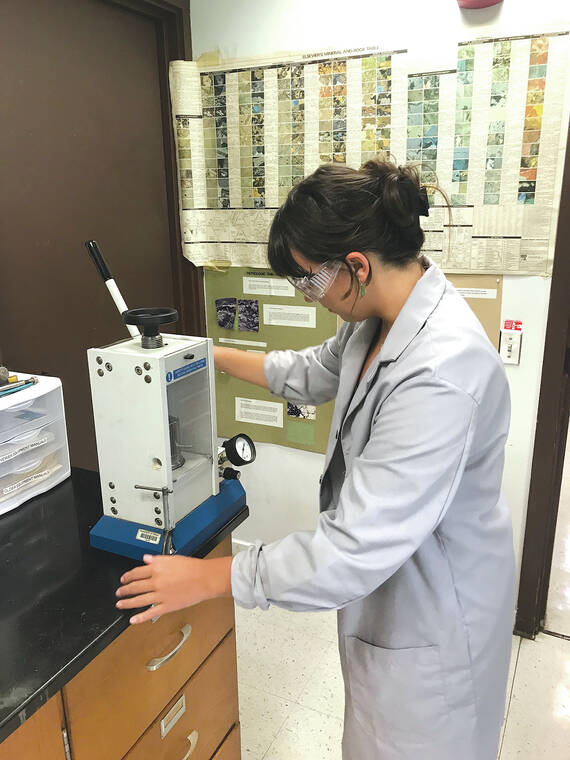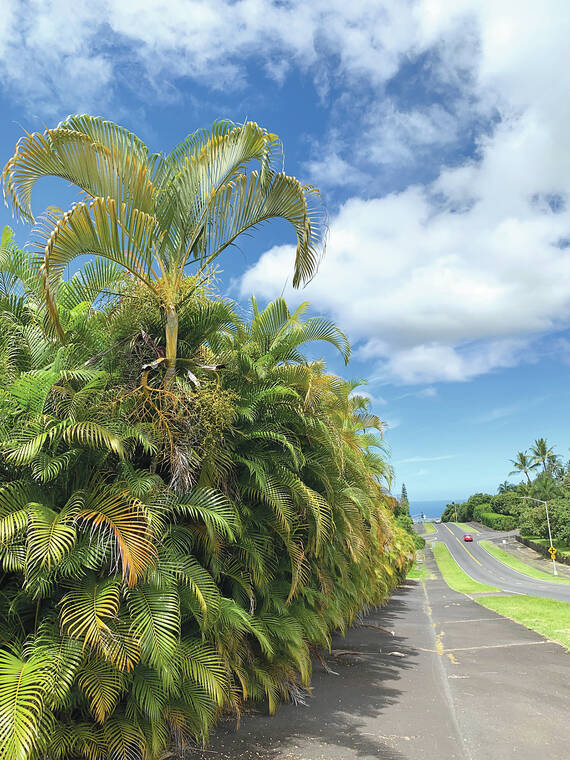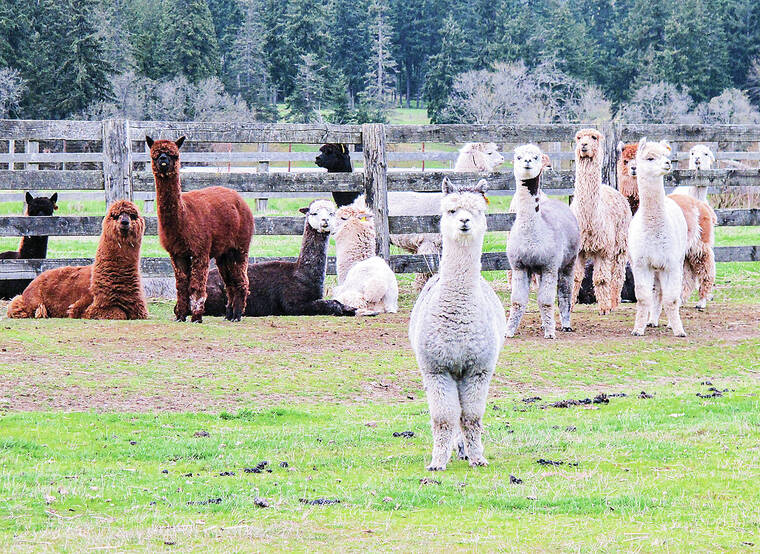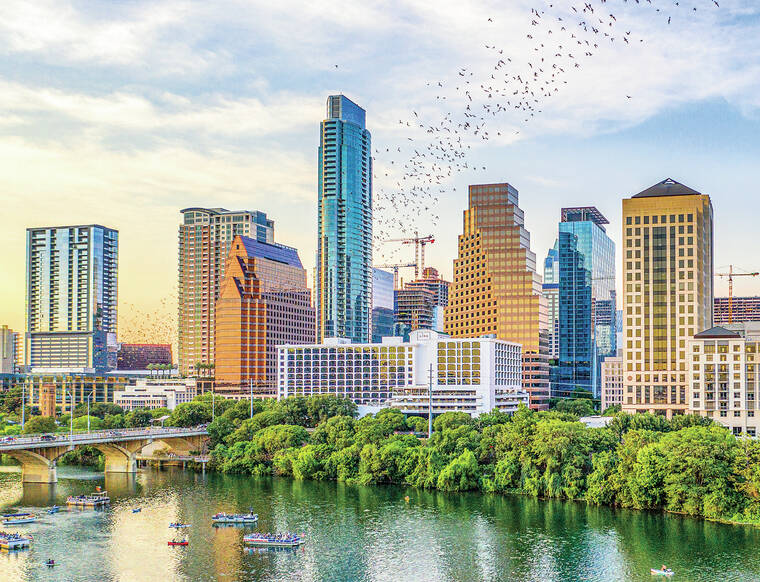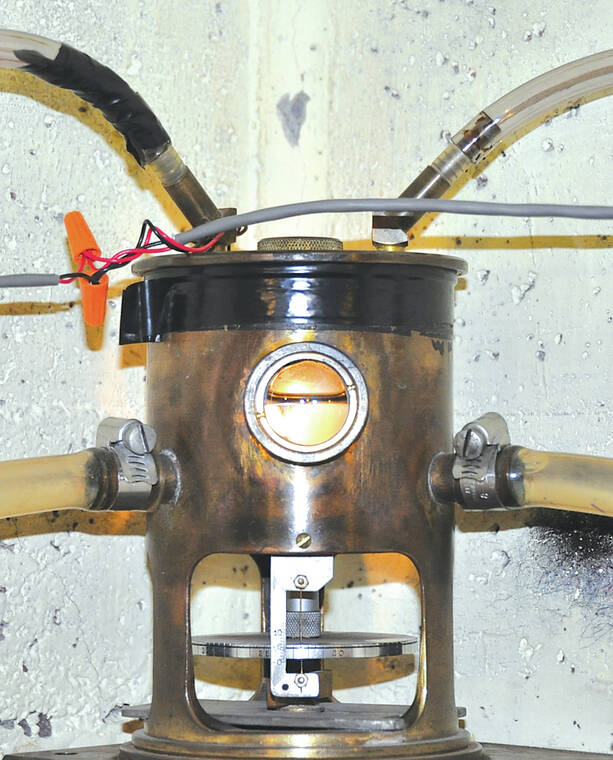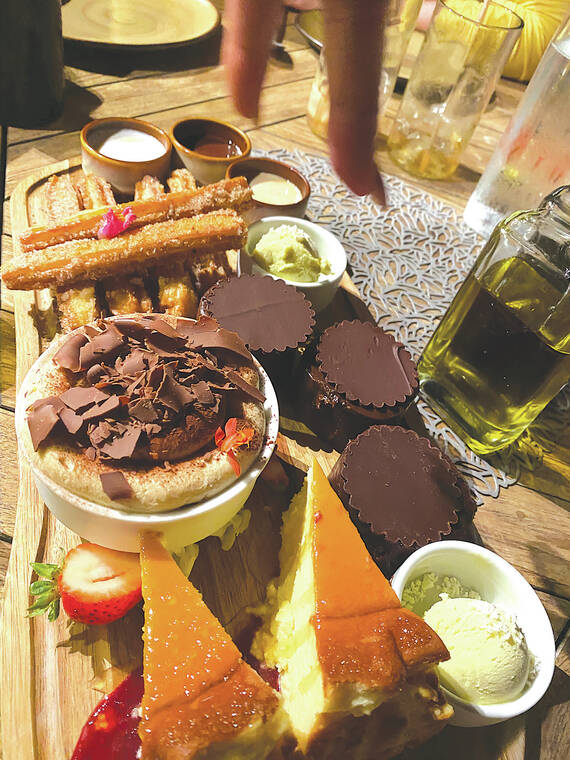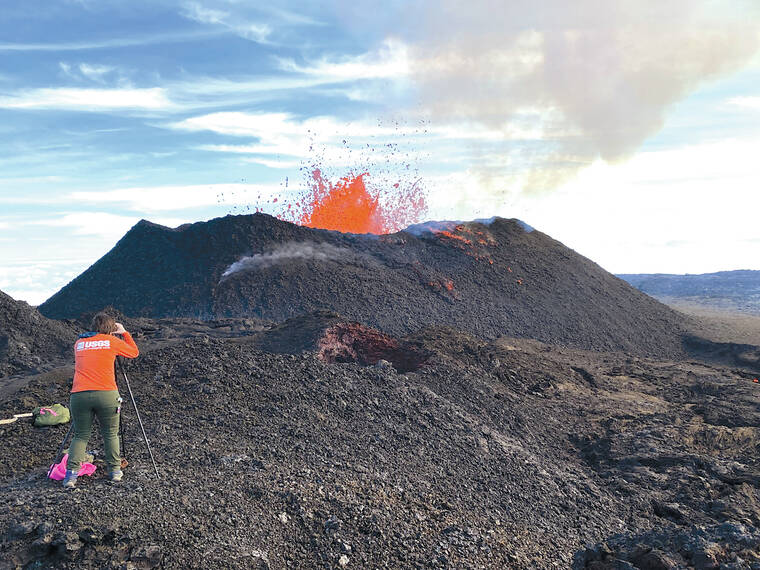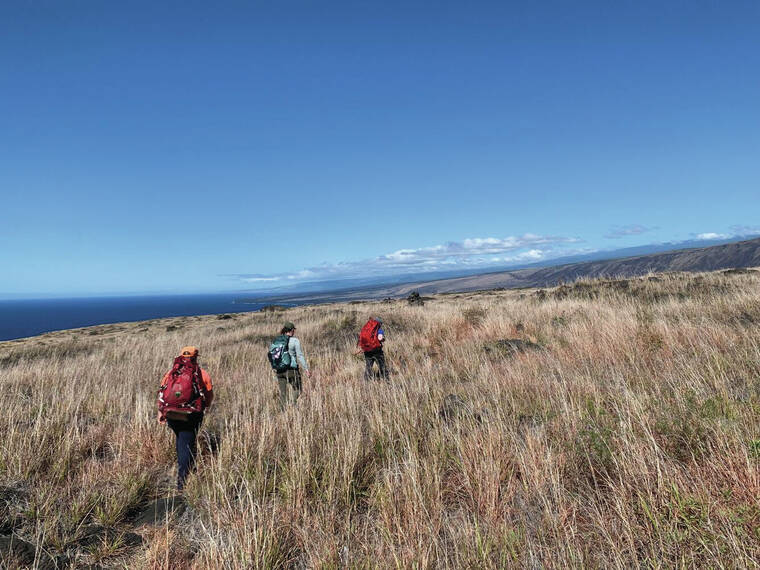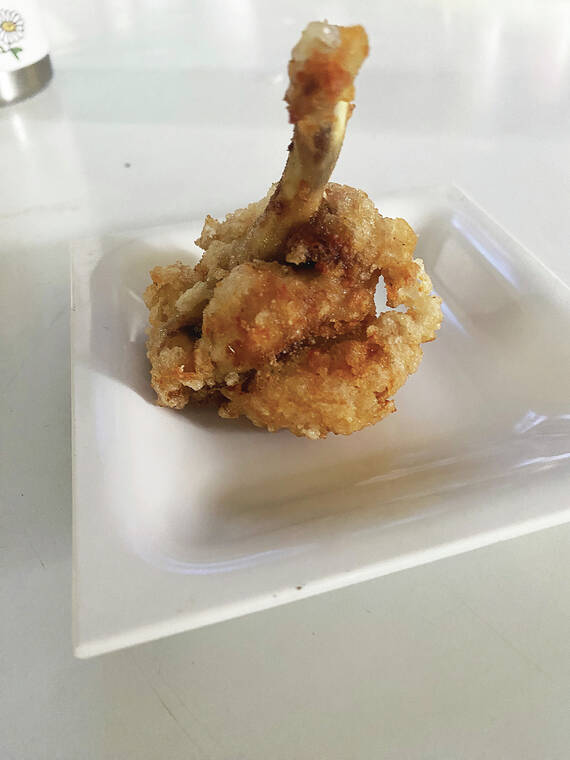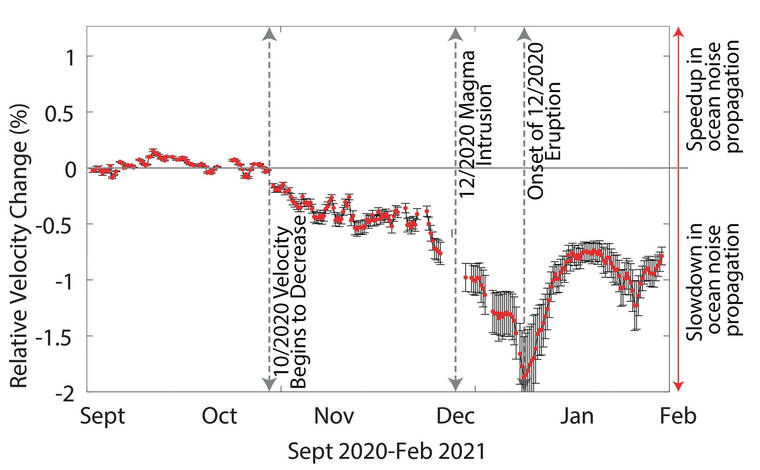Tropical Gardening: Add fall color with flowering plants
What crazy weather we are having! Kona normally experiences the rainy season from April to almost November. This year August and most of September were abnormally dry, as was the rest of the island.
Let’s Talk Food: KTA Super Stores Kona Coffee Recipe Contest
The oldest food festival, the Kona Coffee Festival, will be held November 3-12. The very first festival occurred in 1970 with the intent to preserve, perpetuate and promote Kona’s unique, nearly 200 year heritage.
Volcano Watch: Another Kilauea summit eruption, another opportunity to learn
Kilauea is now erupting at the summit for the fifth time since 2020! The ongoing eruption offers an opportunity for Hawaiian Volcano Observatory (HVO) staff to learn and collaborate with partners at the University of Hawaii at Hilo (UH-Hilo) Geology Department.
Halloween and Christmas are the new summer at California theme parks
It used to be that you could toss a bowling ball down Main Street USA without hitting a soul on Halloween night or Christmas morning because kids and their families had something better to do on those classic holidays.
Tropical Gardening: Clumping bamboos for hedges add to that tropical look
In the good old days, a typical Hawaiian garden was large enough to give neighbors plenty of space to have privacy. As our population increases and land costs escalate, lots are getting smaller. This requires creativity to effectively give us a little garden peace and quiet. Traditional garden designs of Japan have dealt with these issues over the centuries. A trip to Japan would be great, but we can learn by observing how local landscape architects and designers have addressed these challenges.
Let’s Talk Food: Fruits and their ripening
I have written about what fruits need to be purchased ripe, and what ones can be left on the counter to further ripen. With the high cost of fruits these days, it is worth repeating.
‘Spit happens’: Colorado alpaca farm offers overnight stays that bring laughter, joy, healing
COLORADO SPRINGS, Colo. — Kim Wesson likes to say alpacas found her.
What is it about Austin? Simply put, this ‘weird’ Texas city has it all
For a whale-watching cruise there’s Boston, for a dolphin-watching cruise, Miami, but for a bat-watching cruise, go to Austin, Texas.
Volcano Watch: Tilt measurements still vital to volcano monitoring after more than a century
Measuring how a volcano deforms in response to moving magma is one of the cornerstones of volcano monitoring. Our instrumentation includes a number of newer, satellite-based methods but another important instrument has been around a lot longer: the tiltmeter.
Let’s Talk Food: Dinner at the Meridia
It is nice to go out to eat at different restaurants to see how other chefs present their dishes. One such is Meridia at the Hapuna Westin Hotel. Chef de Cuisine Junior Ulep tries very diligently to make dishes using 95 percent Big Island products, whether it is sourced from OTEC, a Kona coffee farmer, a farmer like Raymond Kawamata from Kawamata Farms or even in the garden in the back of the restaurant.
Volcano Watch: Using remote acoustic monitoring to distinguish volcanic styles
Volcanic eruptive activity may take many forms, from gently erupting basaltic fissures in Hawaii to intense explosive eruptions like those of Mount St. Helens. Volcano observatory scientists are keenly interested in understanding such events and their implications for hazards. Two types of eruptions have been the focus of recent studies at Stromboli in Italy.
Let’s Talk Food: Etiquette at the supermarket
There is hardly a day that I am not taking shopping carts back to the cart return area. People just leave the carts in the parking lot, when the cart return area is only a few steps away.
Volcano Watch: Aloha to the University of Hawaii’s newest geology professor
Dr. Lis Gallant has spent the last two and a half years at the USGS Hawaiian Volcano Observatory (HVO) as a National Science Foundation Postdoctoral Fellow studying the lava and cinder cones from the 2018 eruption of Kilauea. She is making a short move up the hill this week to join the department of geology at the University of Hawaii Hilo (UHH) as an assistant professor.
Let’s Talk Food: Master Chef from Hawaii
Last week was Julia Child’s birthday. She was such a powerful force in the culinary world, and to think: she didn’t really cook until she went to Paris!
Volcano Watch: The most unusual Kilauea eruption…maybe 1823?
Last month a Volcano Watch article discussed the bicentennial of the first visit of westerners to Kilauea caldera, led by English missionary William Ellis, in 1823. Ellis did not just visit the summit region; he had approached from Ka‘u, traveling along what eventually became known as Kilauea’s Southwest Rift Zone (SWRZ). Ellis first witnessed evidence of Kilauea’s restlessness there, in the form of a vast, 4.8-square-mile (12.5 square-kilometer) lava flow that had erupted just a short time before.
Let’s Talk Food: CDC names watercress the perfect food
The Center for Disease Control and Prevention (CDC) has named watercress the world’s healthiest food! It received 100 out of 100, with Chinese cabbage just behind at 91.99, Swiss chard at 89.27, beetroot at 87.08, and spinach (sorry Popeye) at 86.43.
Volcano Watch: Searching for tephra from one of Kilauea’s largest explosive eruptions
Understanding the eruptive history of volcanoes in Hawaii requires a tremendous amount of time and effort examining deposits. Typically, older eruptions have less material exposed at the surface because younger eruptions bury them, or wind and rain erode them. Such is the case for one of Kilauea’s largest explosive eruptions, which is not exposed near its source at the summit and must be studied further afield.
Let’s Talk Food: Chicken wings
We grew up enjoying Korean chicken wings as they were affordable, unlike today when prices range from $3 for the whole wing, including the tips, to $7 a pound just for the drummettes! Yet, on Super Bowl Sunday, one billion wings are consumed!
Let’s Talk Food: Versatile cheese
Serving cheese to your guests is one of the easiest things to do, especially with a little knowledge of what to serve.
Volcano Watch: Monitoring Kilauea with ocean noise
Ocean swells are constantly occurring across the Earth’s oceans. These swells interact with the ocean crust below, creating continuous ocean noise that travels all over the Earth, including through our active volcanoes here in Hawaii. Because ocean noise signals are always being generated, scientists can use these seismic sources to identify small changes occurring in the Earth’s crust over time.

